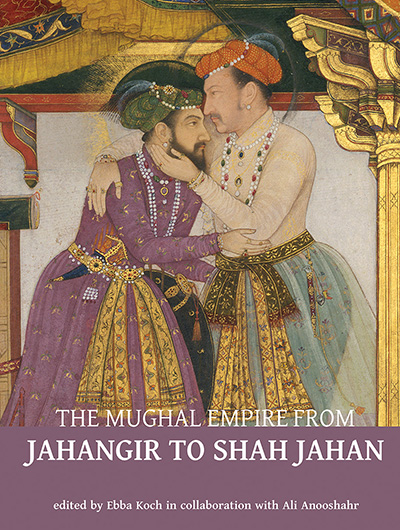
The Mughal Empire from Jahangir to Shah Jahan: Art, Architecture, Politics, Law and Literature
Lee Lawrence
Ebba Koch, ed. In collaboration with Ali Anooshahr.
2019, The Marg Foundation, 978-9-38324-3-266, $90 hb.
Through 15 meticulously researched essays, this book brings into unprecedented focus the history and legacy of the Mughal emperor Shah Jahan, whose reign (1628–1658) is considered the apex of the Mughal Empire. Essay subjects range from parsing the dynamics of loyalty and the rebellion that resulted in Shah Jahan’s accession, to teasing out the politics embedded in court rituals, and from analyzing his artistic and architectural legacies to examining the effective use of art and architecture for political ends. Throughout, we see the degree to which Shah Jahan’s contributions intertwine with his father’s legacy, while he outwardly and persistently differentiated himself from Jahangir. Well-written with ample and well-chosen illustrations, the book offers lovers of history a fresh and deep understanding of the reign of Shah Jahan, while opening enticing avenues of investigation to scholars.
You may also be interested in...

British Museum Curator Takes Readers on Journey Spanning 6,000 Years
Southeast Asia curator Alexandra Green takes readers on a journey spanning 6,000 years, highlighting objects from Neolithic stone tools to contemporary paintings.
British Library’s 500-Year-Old Nizami Manuscripts Shed Light on Power of Art and Poetry in 12th-Century Herat
Persian and Mughal scholar and specialist Barbara Brend presents a comprehensive study of one of the most highly esteemed works of Persian Literature.